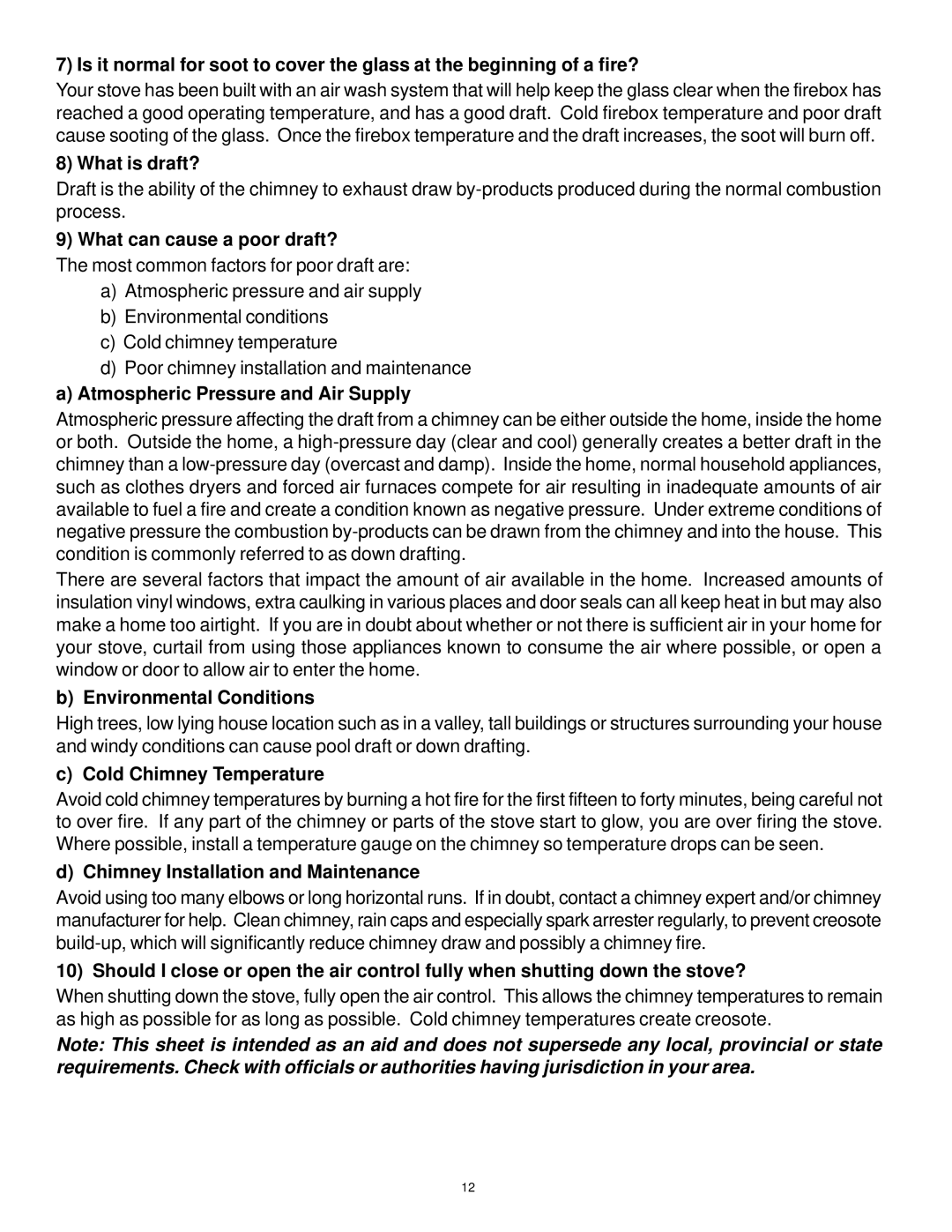WOOD STOVE specifications
Vermont Castings wood stoves have long been regarded as symbols of quality and craftsmanship in home heating solutions. With a reputation that spans decades, these stoves combine function, efficiency, and aesthetic appeal, making them a favorite among homeowners seeking an optimal balance between performance and design.One of the standout features of Vermont Castings wood stoves is their exceptional heat efficiency. Many models incorporate Advanced Combustion Technology, which enhances burn characteristics to produce more heat while reducing the amount of wood consumed. This technology significantly lowers emissions, making the stoves not only environmentally friendly but also economically sensible; less wood burned means more savings on fuel costs.
The stoves are constructed from high-quality cast iron, renowned for its durability and ability to retain heat. This material distributes warmth evenly throughout the space, ensuring a comfortable environment while maintaining consistent temperatures long after the fire has died down. The heavy-duty design also offers remarkable longevity, allowing homeowners to invest in a long-lasting home heating solution.
In addition to their efficient operation, Vermont Castings wood stoves are designed with a classic aesthetic that complements various interior styles. Available in multiple colors and finishes, including timeless matte black and vibrant enamel options, these stoves make not only a practical addition to the home but also a statement piece. The intricate details and craftsmanship reflect a commitment to beauty alongside effectiveness.
Ease of use is another hallmark of Vermont Castings wood stoves. Many models include user-friendly features such as convenient loading doors, clean-out options, and adjustable air controls, enabling homeowners to manage their heat output with minimal effort. Furthermore, the inclusion of a large firebox allows for longer logs, reducing the frequency of reloading and enhancing the overall user experience.
To ensure safety and reliability, Vermont Castings incorporates modern engineering with traditional design. The stoves are rigorously tested to uphold stringent performance and safety standards, giving users peace of mind.
Overall, Vermont Castings wood stoves represent a harmonious blend of efficiency, design, and user-centered features, ensuring that homes remain warm and inviting throughout the colder months. Whether for primary heating or ambiance, these stoves are a worthwhile addition to any residence.
